The Biodiversity of Colorado Through the Lens of Insects
Hello! My name is Aspen and I was chosen as a Siegele intern this year to assist in various field projects across the state. This internship has been a wholly incredible experience; the vast biodiversity and range of ecosystems spanning the corners of Colorado has been a wonder to behold and to learn about, and I have learned an absolute ton. My undergraduate is in economics and natural resource economics, so this has been far from the direction I thought my education would take me; but I am desperately grateful for this opportunity as it has steered my educational outlook and future goals towards something I really love. I have fallen in love with Colorado and with fieldwork. Each of the 10 weeks this summer has whisked me to a different site, a different ecosystem, and a different goal. Weaving together the different trips has been the relationships with all the wonderful people I’ve met, our collective struggle and improvement at plant ID, and (of course) all the bugs of Colorado.
Arthropods have always been a fascination of mine, but over the summer I took the opportunity to not only enhance my knowledge of the plants of Colorado, but of the little buggies as well. The diversity of insects I’ve had the opportunity to see across the state has been somewhat mind-blowing; there is far, far more diversity hiding in each forest and on each blade of grass than I could have ever imagined. Every week I came home with a camera roll full of pictures of arthropods that were almost always all species that I have never seen before. I see something brand new every single day I step into the field and I am extremely thankful to be surrounded by people who are as excited to learn about them as I am to talk about them.
I very quickly established myself as the biggest bug fan in every group that I worked with, since it is truly so easy to find some arthropod-related fascination everywhere you go (and also I have 1 personality trait). Because of this, the most notable trip for me this summer was the bioblitz we helped lead in Coffman, Colorado with Aspen Valley Land Trust. Because of my previously demonstrated interest, I was asked to compile a list of all the arthropods I found in addition to working with plant identification when we were assessing the biodiversity of the ranch. Believe me when I tell you that that was my dream job- I got to wander through densely diverse wetlands, unlike anything I’d ever seen in Colorado, in search of all the little creatures; crouching over flowers, sifting through the grass, chasing wasps with my eyes and chasing moths across the wetlands, pulling grasshoppers off my socks and fishing spiders out of the other intern’s tents, and constantly getting to say “I have no idea what that is” when someone brought me some fascinating insect I’d never seen. With just a few pictures I couldn’t possibly express the incredible specimens and diversity I had the opportunity to witness this summer; Using my limited knowledge and the power of iNaturalist I got to discover who each insect was and what their story was. I ended up finding and identifying 60 insect genus over the 4 days we were at Coffman (and likely several more when delineated to species level), the vast majority of them something brand new to me. I want to go over a few of my favorites from Coffman, what they are, and a little bit about them.
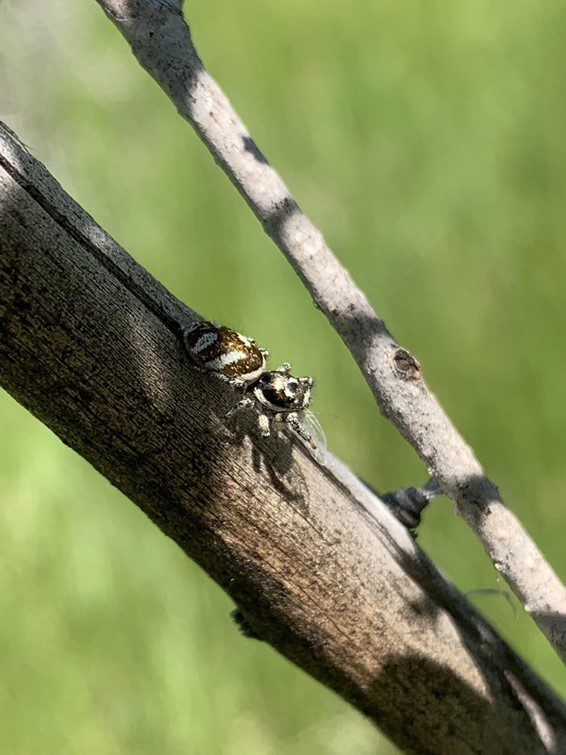
Salticus scenicus (Zebra jumping spider) having a snack on a branch. Not a particularly uncommon species, but zebra jumping spiders are known for creative hunting behaviors and taking down prey much larger than themselves. Jumping spiders have the best eyesight of any arthropod we are aware of, with vision that is only 5-10x worse than ours while being a fraction of a fraction of our size.
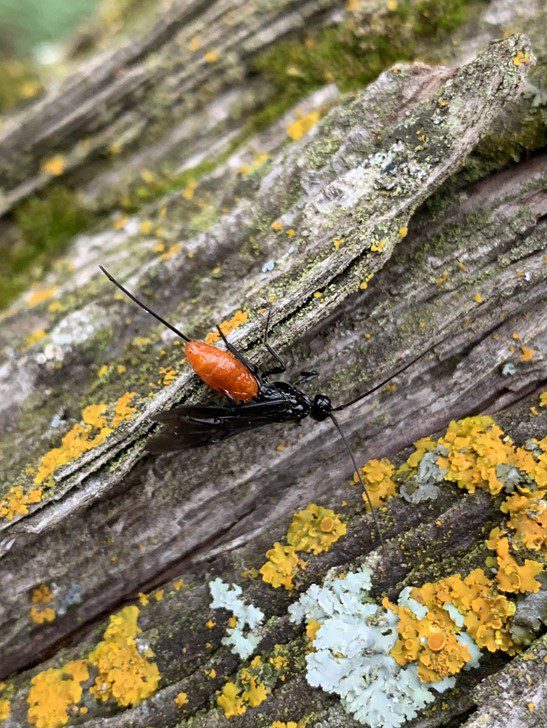
Genus Atanycolus, a genus of parasitoid wasps in the Braconidae family. She is walking along the bark of this tree, trying to detect vibrations of tiny insect larvae moving underneath the bark. Once she discovers something, she will inject her long ovipositor (the long stinger-looking thing – don’t worry, she can’t sting) into the bark and lay her eggs into the larvae she finds with pinpoint accuracy. This particular genus of wasp is known for parasitizing the devastating emerald ash borer, and as such this lady is incredibly valuable as biological control.
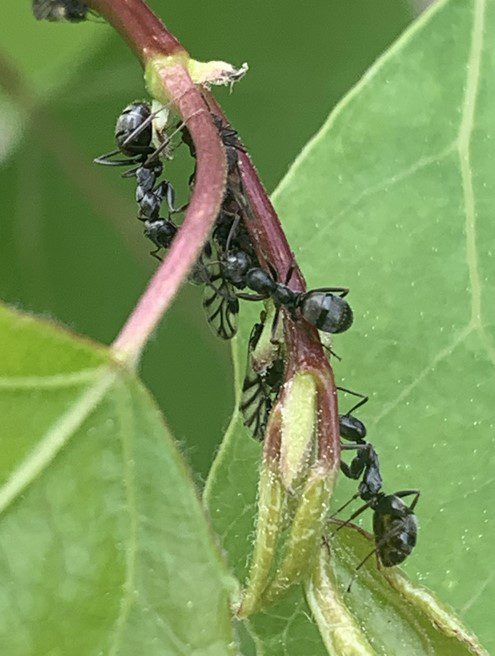
Genus Formica, field ants, “farming” aphids. This was extremely common to see on the stems of young cottonwoods of Coffman ranch. When feeding, aphids produce a byproduct called honeydew; essentially, its concentrated sugar water that comes out of their butts. This is a very popular food for many species of ants; because of this, some members of an ant colony will find and herd aphids to parts of a plant with the highest phloem concentration, gut-loading the honeydew to bring back to the colony. When the phloem runs dry, they’ll herd the aphids to a new plant. They bring the aphids into their colonies overnight to protect them, and at the end of the season they will collect the eggs of the aphids and keep them in their colonies over winter, and “plant” them again in spring. Sounds like another species I know, right? Who knew ants figured out ranching first?

Genus Euura, the larvae of a gall-forming sawfly (who’s home I ruthlessly broke into). Many species of insect, most notably many species wasp, aphid, and midge, will form a “gall” on a host plant species for their larvae to develop and feed in. These take the form of abnormal plant growth on the surface of leaves or the end of branches, and are formed by the injection of a DNA-rewriting enzyme either during feeding or during oviposition (egg laying). As far as we are aware this has no ill effect on the host plant, and basically creates a safe little pod for delicate and vulnerable larvae to grow in!
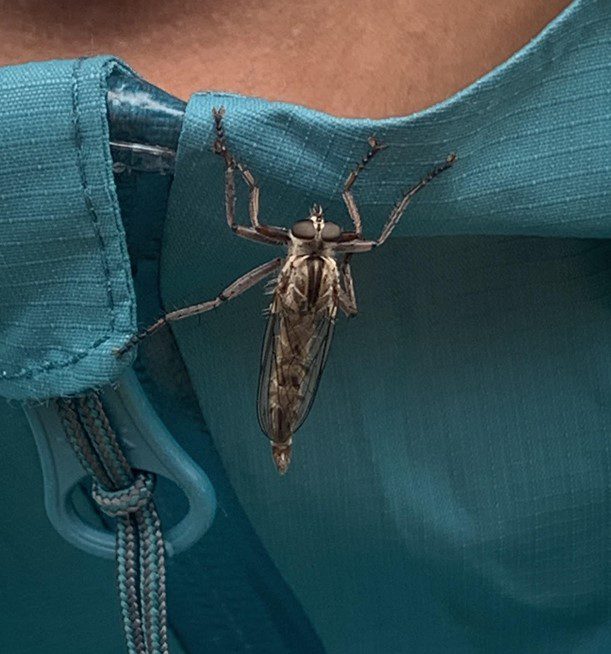
Genus Triorla, a genus of robber flies in the Asilidae family. These are massive predatory flies that capture and feed on other large arthropods, like grasshoppers, spiders, and bees. They also have one of the most painful bites an insect can give you! (Sorry for letting it sit on your face Abby, I didn’t know!)
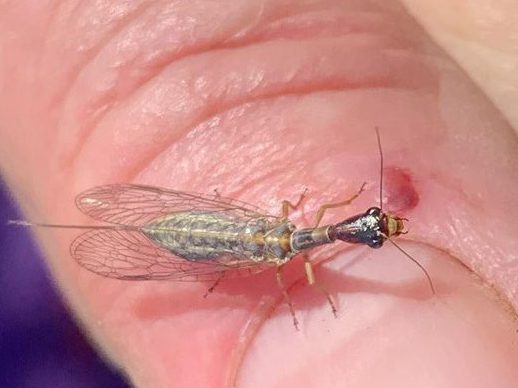
Genus Agulla, a genus of modern-day snakeflies. Snakeflies are predatory insects in their own order, and are considered “living fossils” as species from the early Jurassic period look very similar to the species we see today. This one is a female, determined by her large ovipositor (again, she can’t sting!) which she will use to lay her eggs deep in the safety of tree bark.
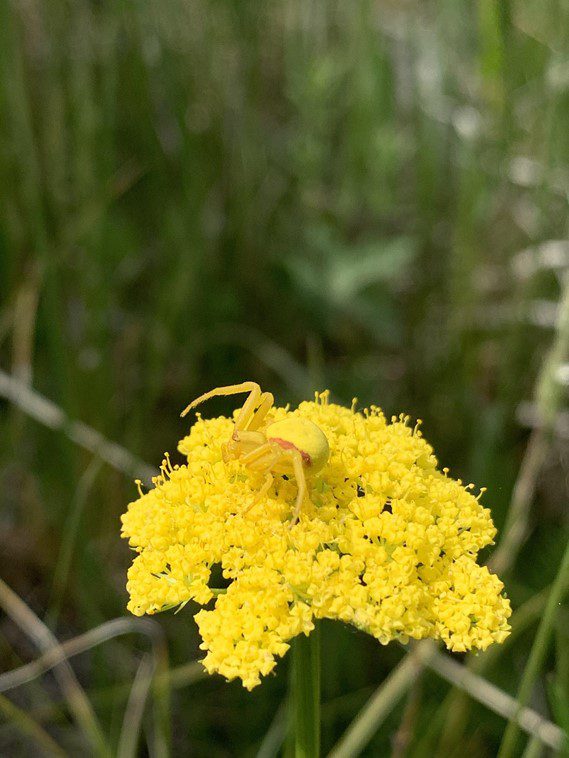
Misumena vatia (Goldenrod crab spider). This fascinating species is an ambush predator, waiting in perfect camouflage on the tops and bottoms of flower heads, waiting for unsuspecting pollinators to go about their business. These spiders exhibit color changing camouflage, and over the course of several days can shift their coloration from yellow to white to green, depending on the species of flower in their area.




